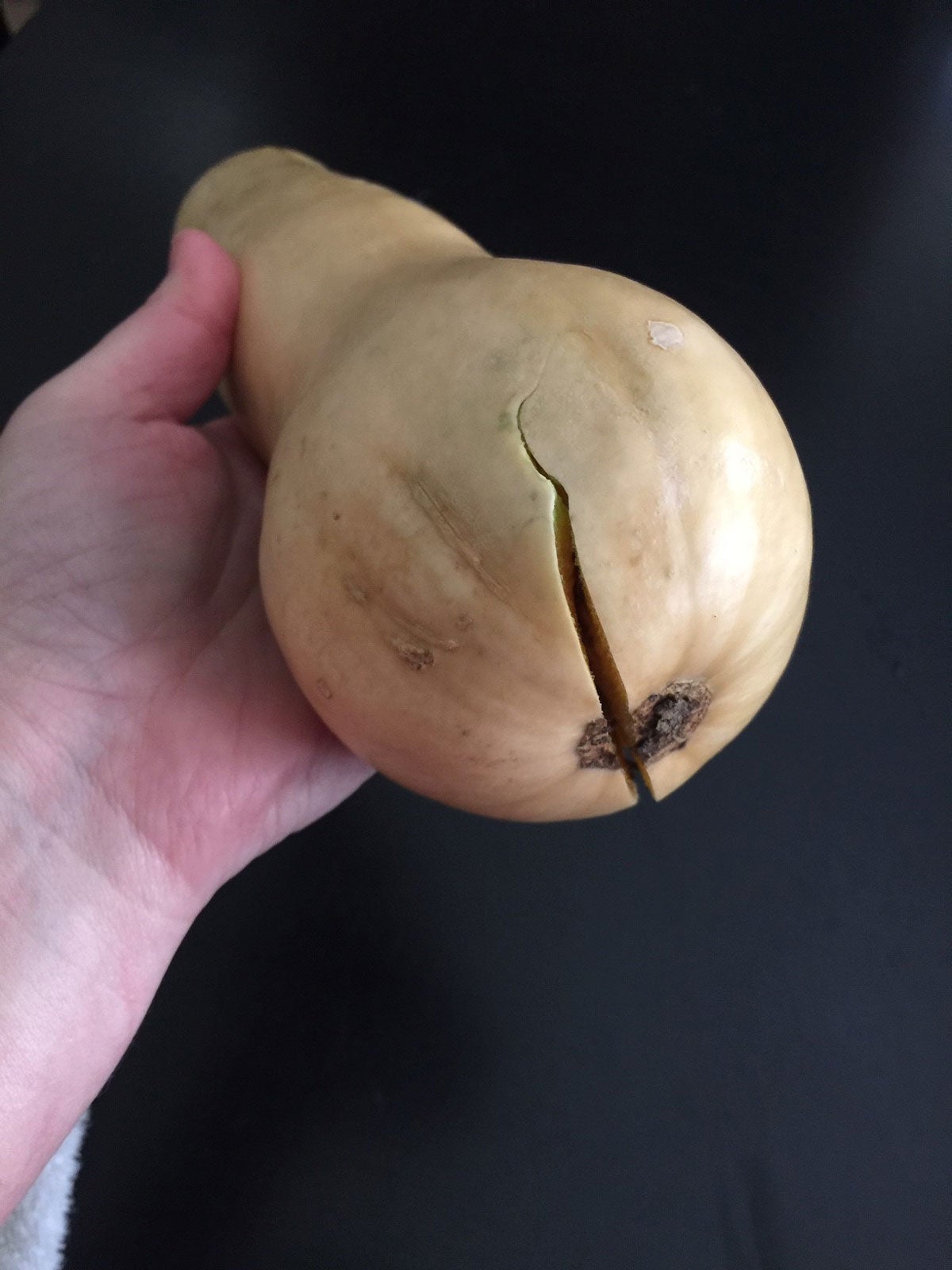
Many folks grow winter squash, which is not only nutrient rich, but can be stored for longer periods of time than summer varieties, allowing for a taste of summer’s bounty during fall and winter months. Of the winter squash varieties, butternut is one of the most popular. Like other winter squash, butternut squash may be prone to problems – amongst these may be fruit split in butternut squash. What causes butternut shell splitting and is there a remedy?
Help, My Butternut Squash is Splitting!
Cracking squash fruit is not an uncommon occurrence; in fact, it happens to other vine fruits too, including melons, pumpkins, cucumbers and even tomatoes. As the squash reach maturity, the outer skins harden. This hard outer layer allows for a long storage period of several months. However, once the hardening process begins, anything that elicits additional growth can result in cracking squash fruit. What can facilitate late growth in butternut squash? Heavy rain or over enthusiastic irrigation is the most common reason for butternut squash splitting. This extra water signals to the squash that it should grow more. The problem is, the outer shell has already hardened, so when the fruit grows, there isn’t anywhere for it to go. It’s like blowing a balloon up. There is a certain amount of air that the balloon will contain before it eventually explodes. More or less, this is akin to fruit split in butternut squash. This butternut squash problem is further exacerbated when there is an abundance of nitrogen in the soil. Again, this signals to the squash that it is time to grow. Nitrogen application at the wrong stage of maturation can cause cracking squash fruit. Butternut squash shell splitting also results from late harvesting. If the squash of other fruit prone to cracking is left on the vine too long, you may end up with splitting.
Treating Splitting Butternut Squash Problems
So what can you do to prevent splitting butternuts?
- First of all, it is a good idea to plant butternuts, or any squash, in a mound or a raised bed which will facilitate drainage.
- Secondly, feed the squash at the correct time. Side dress midseason as the plants begin to vine. Apply 2.5 ounces (70 g.) of nitrogen for each 250 feet (75 m.) of row. Avoid fertilizing any later than this point, which would stimulate growth, hence cracking.
- Also, while it is okay to leave the fruit on the vines until cold weather comes, you are taking a risk of splitting fruit if there is a long hot spell once the fruit has matured.
So, if you have fruit that is cracked, is it still edible? Cracked squash usually heals over. You will see that the fruit has formed a sort of scab over the cracked area. This scab is formed when a substance called ‘suberin’ oozes out and then dries. Suberin is a protective mechanism that repels moisture and attempts to thwart the entry of bacteria. If a bacterium has entered the fruit, it will soon be patently obvious and irreparable, as the fruit will rot. If not, a butternut scarred with suberin is perfectly okay to eat.
Sign up for the Gardening Know How newsletter today and receive a free copy of our e-book "How to Grow Delicious Tomatoes".

Amy Grant has been gardening for 30 years and writing for 15. A professional chef and caterer, Amy's area of expertise is culinary gardening.
